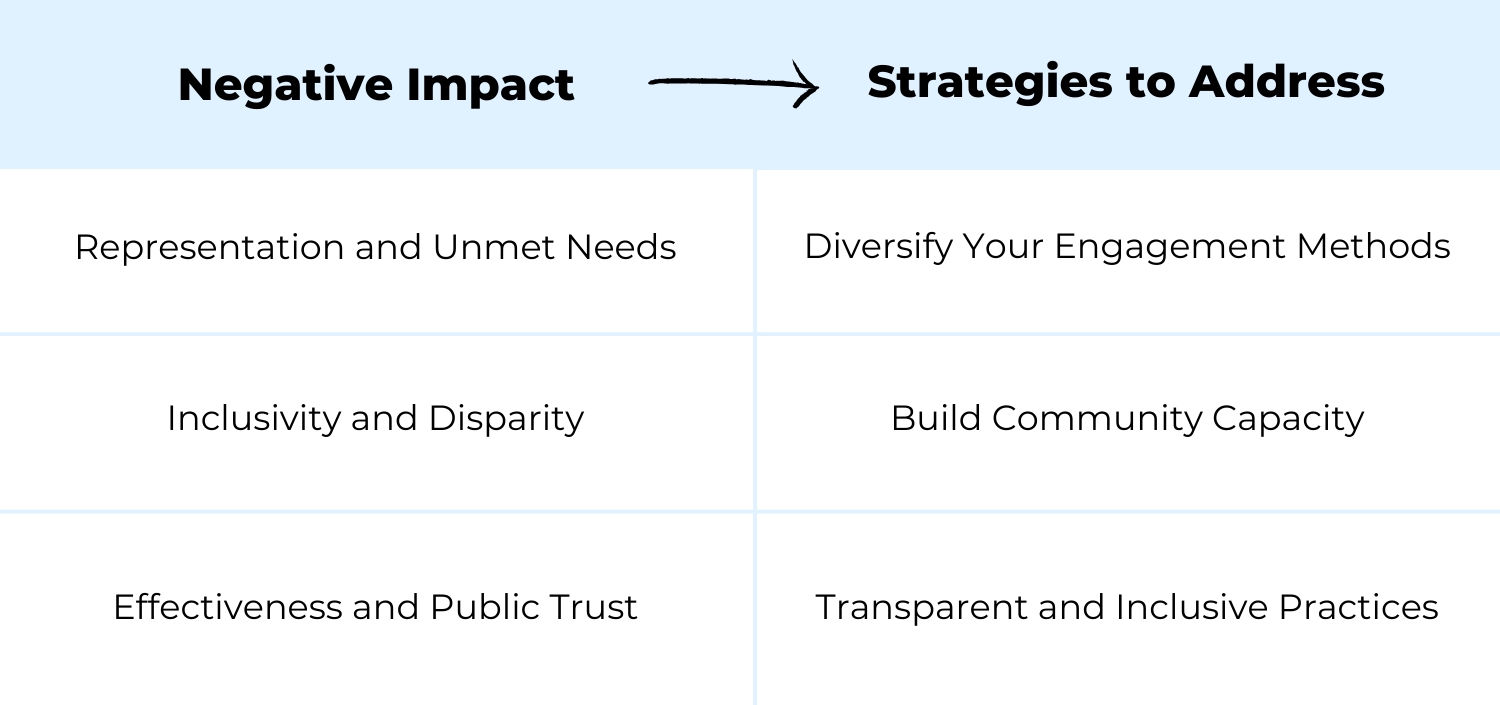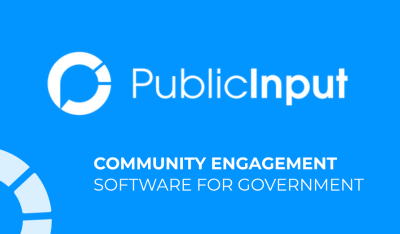
Diversity Barriers that Impact Inclusive Community Engagement
State and local governments working towards a more inclusive community engagement experience encounter a variety of challenges that impact the ability of residents to participate. One common challenge includes the trend of hearing from the same stakeholders and residents repeatedly.
Consequences of Limited Perspectives in Community Engagement and Strategies for Improvement
When community engagement becomes dominated by a select few, it stifles diversity in viewpoints and feedback, hindering effective decision-making. This lack of representativeness can lead to policies that don’t fully address community concerns, exacerbating inequalities and erode public trust. Here’s a look the negative impacts to community engagement and how state and local governments can address them:

Representation and Unmet Needs
When the same individuals consistently participate in community engagement activities, there is a risk that the broader population’s diverse viewpoints and needs are not adequately represented. This lack of representativeness can result in policies and other decision making that does not fully address and/or capture the spectrum of community concerns.
Strategy #1: Diversify Your Engagement Methods
State and local governments should experiment with a variety of engagement methods that prioritize the resident experience. Offering easy and intuitive engagement options encourages a broader range of residents and stakeholders to learn and engage. Here are just a few methods to consider:
-
-
-
- SMS Text Messaging integrations offer an accessible and effective method of communication.
- Project Sites and comprehensive public involvement hubs offer a diverse access to information to residents.
- Online Surveys offer a method to ensure that the insights accurately represent diverse perspectives.
-
-
Inclusivity and Disparity
Marginalized and underrepresented communities (such as minorities and individuals with disabilities) frequently encounter obstacles in engaging through traditional channels (like in-person public hearings). This exclusion can worsen current inequities and sustain a pattern that favors only a portion of the population that is consistently given a voice.
Strategy #2: Build Community Capacity
Invest in programs and strategies that help vulnerable and underrepresented groups more easily engage in civic activities. This may include increased educational opportunities, strategic outreach to targeted neighborhoods, or a variety of engagement modes and options. These programs, paired with some of the below methods will empower communities and help bridge the participation gap to ensure a diverse range of voices are heard.
-
-
-
- Hybrid Meetings integrate both in-person and virtual methods to expand engagement opportunities.
- Social Media integrations that can be used to target underrepresented and impacted residents.
- Email tools that include enhanced multilingual campaign builders that support language accessibility.
-
-
Effectiveness and Public Trust
Relying on input from a homogenous group or a set of “usual voices” may lead to a stagnation of ideas and solutions. Over time, the lack of fresh perspectives and diversity of thought can hinder the ability to effectively adapt and address issues. Additionally, the perception of exclusivity and favoritism associated with hearing from the same few stakeholders can erode public trust in government institutions.
Strategy #3: Transparent and Inclusive Practices
Clear communication about decision-making processes, including how input is considered and used, will enhance transparency and build public trust. As a result governments will see broader participation as community members become more confident that their input matters. Here are a couple of examples of how governments can implement transparent and inclusive practices into their approach:
-
-
-
- Implement Tactics: that include consistent communications, online and offline options, and geographic based attribution to increase transparency, close the communication loop, and build a stronger relationship with the community.
- Establish Mechanisms: that streamline the engagement process and centralize data to ensure that decisions reflect the needs and aspirations of the entire community.
-
-
Know Who Is Engaging and Expand Your Reach
Expanding reach and engagement within the community requires a concerted effort to diversify engagement methods, empower underrepresented communities, and foster an inclusive decision-making process. By doing so, state and local governments can tap into a richer array of perspectives and enhance the legitimacy and effectiveness of their efforts.
Visit PublicInput’s “Hear from More Residents” solution page and schedule a demo to see the platform in action.



